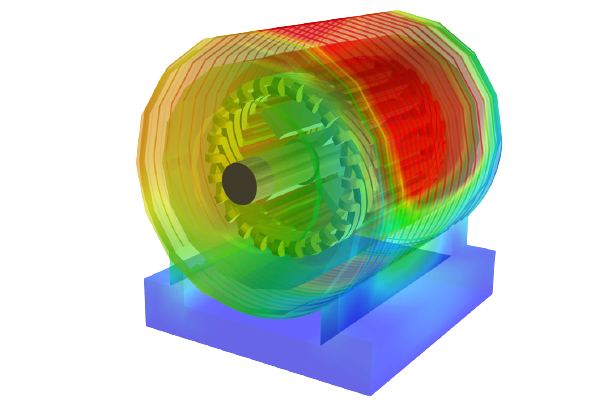-
-
Access Free Student Software
Ansys empowers the next generation of engineers
Students get free access to world-class simulation software.
-
Connect with Ansys Now!
Design your future
Connect with Ansys to explore how simulation can power your next breakthrough.
Countries & Regions
Free Trials
Products & Services
Learn
About
Back
Products & Services
Back
Learn
Ansys empowers the next generation of engineers
Students get free access to world-class simulation software.
Back
About
Design your future
Connect with Ansys to explore how simulation can power your next breakthrough.
Free Trials
ANSYS BLOG
June 9, 2021
Electric Machines: Simulating the Power to Win
Automotive engineers across the world are designing the electric powertrain systems that are bringing electric vehicles (EVs) to the mainstream. The number of electric cars, buses, vans and heavy trucks on the road is expected to hit 145 million by 2030, according to the International Energy Agency (IEA).1 As a result, the EV powertrain market is anticipated to reach $135 billion USD at a 16% compound annual growth rate from 2020 to 2027, according to a Market Research Future report.2
To beat the competition in this rapidly growing market, automakers and suppliers are focused on ensuring EV powertrains are efficient to design, manufacture and operate. As they race forward with EV development, engineers are increasingly using simulation to leverage the potential of holistically optimizing the powertrain with a systems engineering approach.
Electric Machines Get on Track With Simulation

For decades, motorsports have provided a venue to push the limits of vehicle design. Electric vehicles are no different. Motorsport engineers run a gauntlet of challenges, including tight regulations regarding the battery, chassis and body of their vehicles, as well as tight deadlines. The innovations that survive that gauntlet often wind up on the road. For example, disc brakes, modern suspensions and even rear-view mirrors all had their start on the track. Electric vehicle powertrain efficiencies follow the same course.
Powertrains are the key focus for EV racing teams because improved EV racing performance is directly related to improved powertrain efficiency. Powertrain efficiency can be greatly improved by optimizing electric motors early in the design process when it takes less time and money to make changes. Simulation provides the means to find the most promising designs and virtually test them to arrive at the optimal solution.
Simulation helps engineers boost electric motor efficiency.
To learn how Porsche Motorsport approaches key aspects of electrical powertrain simulation, register for our upcoming webinar: “Leveraging Simulation to Realize a Highly Efficient Powertrain.” Detailed modeling of the electric machine will be described, emphasizing the impact of switched inverter voltages.
System Simulation Is a Winning Approach
Electric powertrains aren’t the only aspect of EVs that engineers are simulating to boost efficiency. Everything from removing weight from the chassis to creating more aerodynamic body shapes to tire design and more come into play in a systems approach to engineering. Ansys offers a complete simulation workflow that progresses from concept to detailed design, spanning all system components like the battery, power electronic inverter and digital control, mechanical transmission and thermal management elements. These components span engineering disciplines, including electrical/electronic/EMC (electro-magnetic compatibility), software, thermal, mechanical with noise/vibration/harshness (NVH) aspects – and even into virtual human-machine interfaces.
Tune into the webinar to learn how Porsche Motorsport uses system simulation to estimate the energy consumption of the inverter and electrical machine over the full length of a race.
To learn more about system simulation and integration from the concept design stages to analysis optimization and verification click here.
